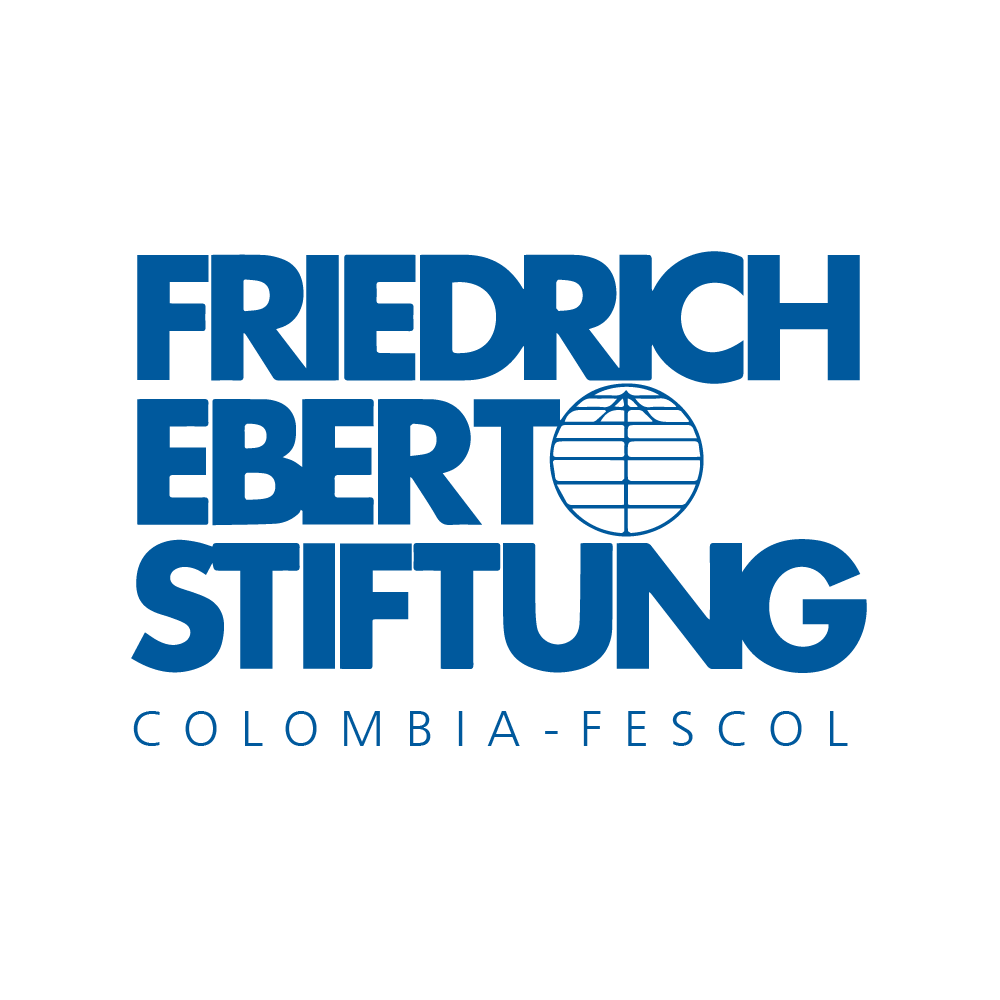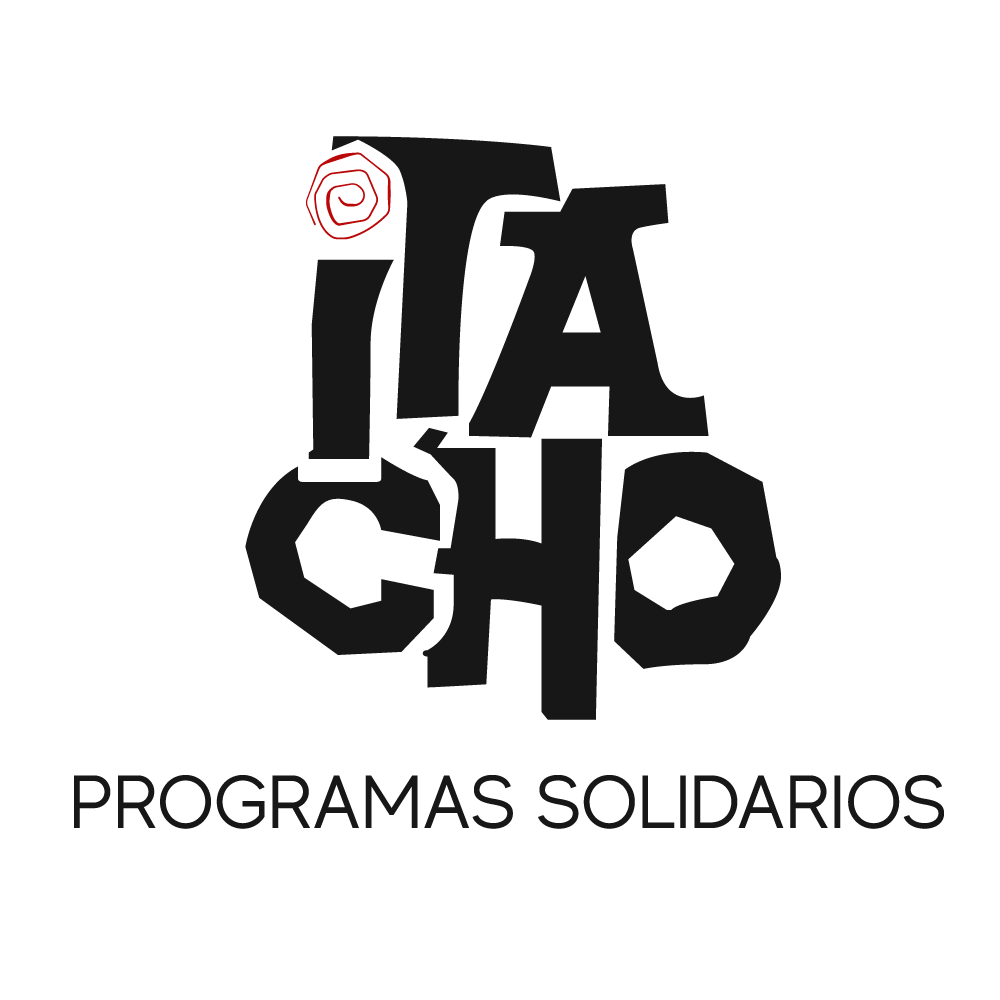“Not everything has been bad,” says Yulieth Villa, a former combatant of the defunct FARC guerrillas, talking about what the reincorporation process has meant for her, a woman who was in the armed struggle for more than 10 years. “As people, we have had opportunities: to form a home, to have a new life, to be close to our children. In a way, it has been positive for us,” she adds.
But her vision of this transition from life in arms to legitimacy becomes critical when she delves into her reflections and contrasts her past in the war with the present, currently her life is spent in El Oso, a Territorial Training and Reincorporation Space (ETCR) located in the municipality of Planadas, region of Tolima, one of the 24 spaces that exist in the country to strengthen the process of comprehensive reintegration into civilian life of at least 3,000 former guerrillas who still remain in them.
“Sometimes we think about whether or not we wasted our time in the organization (the FARC),” says the ex-combatant. “There were many days in which lives were lost, a lot of blood was shed, and when we look at how we are now we don’t find answers. We were risking our lives for a change, then they come and make a peace agreement up and instead of advancing, we went backwards”.
To justify her assessment, she invokes the figure of Pedro Antonio Marin, known as ‘Manuel Marulanda Velez’, one of the founders of the former FARC guerrillas: “The struggle of comrade Manuel was for schools, roads, a health centers. And one looks at the needs and they are still the same: there is a lack of schools, roads, health centers”.
Fredy Escobar Moncada, a university-educated ex-combatant who currently carries out academic activities in one of the country’s main cities, attaches significant value to the demobilization and disarmament of ex-combatants, presenting them as one of the main achievements of the Peace Accord.
“Beyond the political project, beyond the aspirations they may have as an organization, and now as a political party, the truth is that in Colombia, these people are already thinking about something other than the armed struggle”, he highlights and adds that this decision contributes “to a different society, to a peaceful society; it also contributes to what we could begin to call coexistence, harmony, tolerance, respect for differences, for political opposition; and they are no longer placing victims in this conflict”.
But when contrasted with the reality of the men and women who began the path to legitimacy under the Peace Agreement, Escobar’s vision also becomes critical and calls attention to the vision of the State in this process: “The Peace Agreement was stipulated as collective reincorporation and in any case the State continues with individual reincorporation”.
And what are the consequences of this state policy? For Escobar, a reincorporation with an individual approach “clashes politically, ideologically, economically and socially with a collective reincorporation, because the former depoliticizes, de-ideologizes, individualizes, and finally the objective seems to be dispersion and not continuity, for example, of an integrated community”.
The other side of the coin is exposed by the Agency for Reincorporation and Normalization (ARN), the state entity responsible for the reincorporation process of those men and women who laid down their arms under the Peace Agreement, under the policy of Peace with Legality, promoted by the national government.
According to the ARN, 14,708 people belonging to the former FARC were demobilized, of which 12,925 are in the reincorporation process. And according to the Council for Stabilization and Consolidation, 3,661 productive projects have been approved to date, of which 101 are collective and 3,560 are individual, for a total value of 75,264 million pesos, involving 7,822 people in reincorporation, thus reaching 60.5 percent of the reincorporated ex-combatants.
Five years after the beginning of the reincorporation of ex-combatants into legal life, there are contrasting views and their interpretation depends on the lens through which this process is viewed. On the side of the beneficiaries, there is recognition of achievements accompanied by criticism; and on the side of the State, there are figures that contradict them.
From the territories
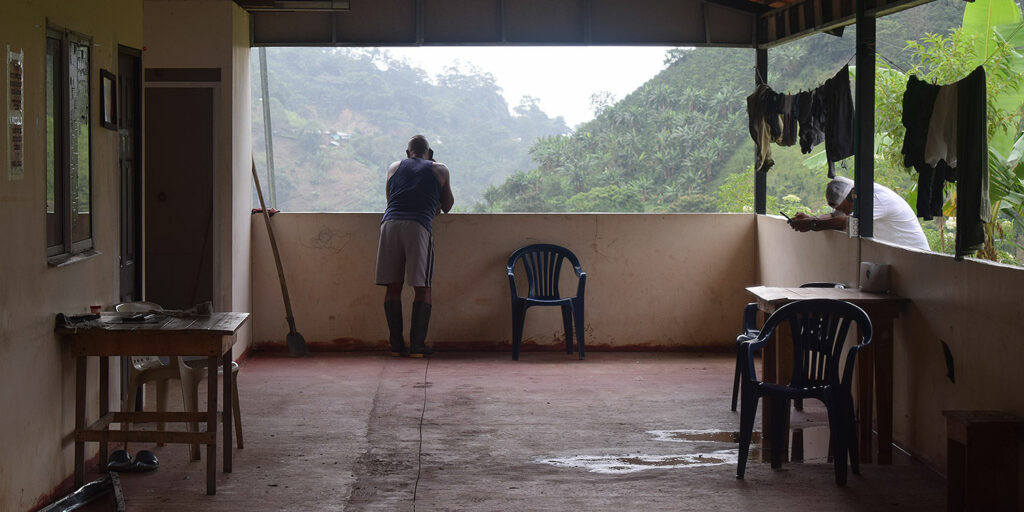
Carlos Grajales went from having a rifle slung over his shoulder to presiding over La Roja craft brewery, one of the most recognized productive projects of the reincorporated who´s idea emerged in 2017 in the ETCR set up in the municipality of Icononzo, region of Tolima, as a response, according to him, to the national government’s failure to comply with the Agreement in the financing of viable productive projects for ex-combatants.
However, the process of setting up and developing this brewing initiative has not been easy. At the beginning, they were faced with the regulations required by the Food and Drug Surveillance Institute (Invima) to grant them the sanitary registration, including having a production plant, and with the planning rules that applied to the ETCR of Icononzo.
“We got the money to build the plant and it cannot be built because the POT (Land Use Plan) of the municipality has a pastoral land use and to switch to industrial use we have to make an exercise of political will of the government and the mayor’s office and none of them helped us. That is why we came to Bogotá”, explains Grajales, which implied abandoning the ETCR, a decision that had not been part of his plans until then.
This former FARC guerrilla defines the brewing project as “an association in the logic of solidarity economy”, whose profits are donated to territorial projects of the communities, among them the construction of kindergartens for the children of his comrades in the process of reincorporation. “It wouldn’t make sense to have fought against capitalism for many years to set up a capitalist company so that four or five of us could become millionaires; that’s not our objective,” Grajales emphasizes.
Bureaucratic obstacles also make it difficult for ex-combatants to access productive land to advance their economic and social reincorporation process, a situation that worries them ostensibly if one takes into account the rural origin of hundreds of former guerrillas who joined the Peace Accord.
“We need land for our productive projects, to have our houses, if we can have productive projects, we are building peace”, insists Joverman Sánchez, a former guerrilla leader who is leading a social and economic reintegration process in the municipality of Mutatá in Urabá, Antioquia.
In his opinion, the national government’s measures are insufficient and are also flawed: “They are giving us very little food, with many difficulties and there is always conflict and. We have a bankarization, in that they comply with us, but it is not the essence of the Agreement. We need the land to work and we need them not to kill us so we can work the land”.
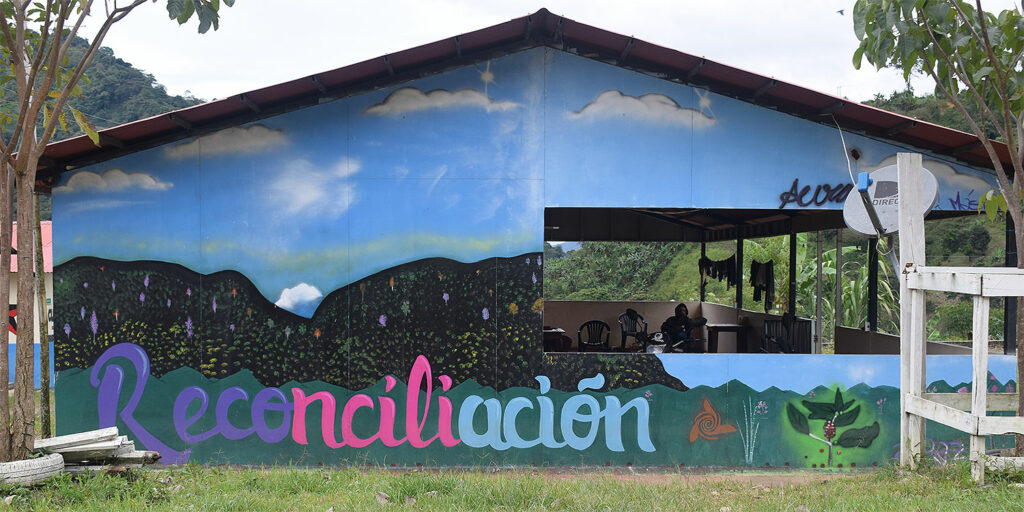
Sánchez’s concern about the security of ex-combatants has a basis in reality: to date, 290 signatories of the Peace Accord have been murdered in various regions of the country, a tragic balance for those who trusted in the pacts reached in Havana, Cuba.
Hundreds of kilometers from Antioquia’s Urabá, towards the south of the country, former guerrilla Diego Ferney Tovar draws attention to another of the most sensitive issues in the reincorporation process: municipal public policies that guarantee access to rights for demobilized former FARC members and their families.
Tovar is part of the group of ex-combatants who gathered in the ETCR built in the municipality of La Montañita, region of Caquetá, and from there he accentuates the situation of those who live in that territorial space.
“Today we are excluded from the public policy of the municipality of La Montañita. Go to the territorial planning scheme, which is where the action plan of the Mayor’s Office is derived and see what there is for Agua Bonita, for the town of Héctor Ramírez, and there is nothing because it does not appear in the public policy”.
And he continues: “In public administration it is said that if you do not exist in the public policy, you do not exist for any institution, here we have had to fight for the people to be able to join the Sisben, and the local government, protected by the national government, had the nerve to say that here we could not join it because we were signatories of the Agreement and we belong to a different program”.
The Sisben (System for the Identification of Potential Beneficiaries of Social Programs) is a state tool through which the least favored communities are classified according to their living conditions and income in order to focus social investment and ensure that it is allocated to those who need it most.
“To access health care, we need to be Sisbenizados, but it turns out that it is not only about the signatories, it is about the children of the signatories. Here we have communities of more than 100 children,” says Tovar and denounces that in La Montañita they are not admitted to the Sisben either, which limits access to basic rights, such as health and education.
In chiaroscuro
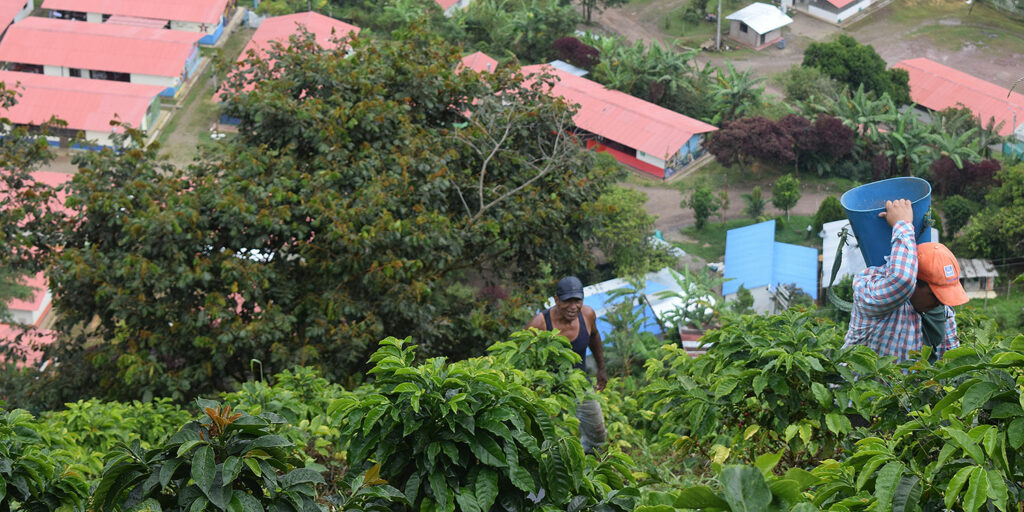
Escobar recognizes that the social, economic and political reincorporation process responds to the balance of the implementation of the Peace Accord which, in his opinion, “has very positive aspects, but, obviously, also has very unfortunate aspects”.
Although he highlights the continuity of the monthly allowance or basic income, which consists of a state contribution of 90 percent of the current legal minimum wage for former combatants, he considers, however, that this contribution “does not have the accompaniment, the simultaneity, the synergy of the productive projects, so the basic income ends up being useful, but not sufficient for the return to civilian life”.
This former guerrilla makes a critical assessment of the productive projects after considering that those projects with an impact, “that generate income, that help to solve problems, that lead people to move from a war economy to a family economy”, are yet to be seen.
In his opinion, the main threat in the ETCR is misery and poverty, “and with that a reincorporation, a reintegration to civilian life, are in the same conditions that, in certain occasions, propitiate the armed conflict”.
He also draws attention to those who are outside these spaces, such as the 350 ex-combatants based in Medellín, who, in his opinion, “live in conditions of great social, economic and political risk”.
And he adds: “When the work on causes and consequences of the war was finished, axes of persistence were also identified, and one of the axes of persistence that contributes to the survival of the armed conflict is precisely the failure of ex-combatants to return to civilian life. Failure in that means a failure of a peace policy”.
Pastor Alape, former guerrilla leader who is part of the National Council for Reincorporation (CNR), assures that the reincorporation process “is moving forward, facing and overcoming many obstacles because there has been no effective commitment on the part of the government”.
Regarding progress, he recognizes the permanence of most of the ETCRs which, little by little, are becoming populated centers, despite the difficulties they have faced, especially in security issues.
In these five years of implementation of the Peace Agreement, at least four of these spaces have faced problems: the first of them was the one in the Gallo village, in Tierralta, Córdoba, which was transferred by decision of the ex-guerrillas to the municipality of Mutatá, Antioquia; the second was La Elvira, in the municipality of Buenos Aires, Cauca, whose inhabitants were displaced and dispersed; the third was Santa Lucía, in Ituango, which had to move to Mutatá, in order to preserve their lives.
And just the fourth was recorded this weekend, in the ETCR Urías Rendón, in the municipality of El Doncello, region of Caquetá, from which 106 families who signed the Peace Agreement were forced to move due to the action of illegal armed groups. To address this situation, the Integral Resettlement Route was activated. (See press release)
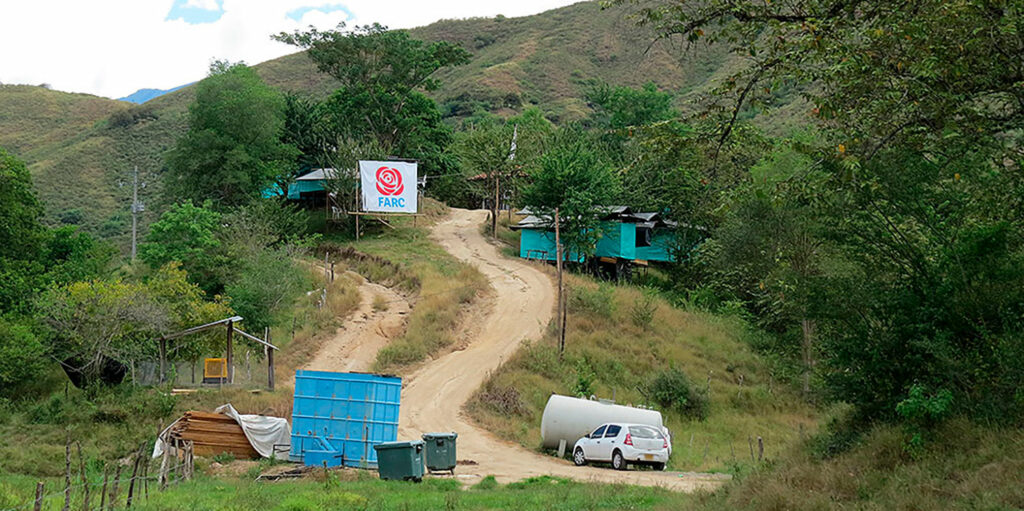
Despite the difficulties, the representative of the former FARC in the CNR highlights the initiatives of the ex-combatants, who “have been building productive processes that are being recognized in the country. What we are seeing here is a permanent initiative and creativity of the reincorporated combatants”.
And to back up his criticism against the national government, Alape makes a list of shortcomings that, if they were to be made effective, would strengthen the reincorporation process: “there is still no land for productive projects, neither collective nor individual; there is no land for housing or housing plan; there is no concrete program for education; and there is no program that guarantees access to concrete rights for the elderly, people with disabilities and high-cost illness”.
And he adds to this list the lack of access to bank credits, an issue that complicates the process of economic insertion. “Every time they apply for a loan, legal proceedings appear. We all have that situation and, obviously, the banks set off alarms,” says the former guerrilla leader.
“It is not possible to develop concrete activities in associations, in cooperative and associative processes,” he adds, “because, in the same way, we find ourselves with these limitations” and warns that, in this sense, “there has been no concrete action of transformation or regulatory adjustment to guarantee the reincorporation, the concrete transition of the men and women of the FARC to the institutional framework”.
In his analysis, Alape considers that part of the shortcomings faced by the reincorporation process is due to the disarticulation of the State, a situation which, in his opinion, the Peace Agreement tried to correct, but which, after five years of its implementation, has not yet been achieved, among other reasons because there are “officials who do not understand, who are not clear, that it is not a matter of a subdued citizenry, but a citizenry that signed a Peace Agreement, and is a protagonist of that Agreement”.
And private enterprise?
Escobar and Alape underline the progress that has been achieved by integrating alliances with the private sector, both national and foreign, into the reincorporation process. Escobar highlights the willingness of some businessmen to “want to help, to express their philanthropy, their social responsibility”, but insists on pointing out that, due to their individual approach, political reincorporation is being relegated because, in some way, it clashes with the debate over the dispute for political power.
Alape, for his part, emphasizes the productive alliances with the private sector which, in his opinion, offer an experience in the struggle to implement the Peace Accord, and says that “they have been joining in, but with great fear. We believe that it is part of this process to be more informed, to see more of what is being done”.
He stresses, however, the role that Proantioquia Foundation, which brings together a large group of businessmen in the region of Antioquia that promote regional and national development initiatives, and the National Federation of Coffee Growers, have been playing in the reincorporation process. But more assistance is needed,” he affirms, “more activity on the part of the government, so that the business community sees that there are also opportunities here and that if alliances are established, peace can be built in the territories”.
The information provided by ARN for this report makes it possible to establish in detail the participation of private companies at different levels of the reincorporation process of former FARC combatants. In its presentation, it highlights that this agency “has managed to consolidate a strong relationship with strategic external actors that have supported the National Reincorporation Policy from different fronts”.
In line with this, it details that, in relation to the support to productive sectors, both individual and collective, it has received contributions “in kind, in strengthening, monetary, consulting, commercial alliances, marketing support, vaccination for livestock and training” from 24 private organizations.
Another way of linkage is through the strengthening of associative forms in "commercial, financial, productive and organizational areas through different local, national, public, private and international cooperation leaders". According to ARN, these types of actions are reflected in "support for formalization procedures, training processes, technology transfer and financial services".
Regarding the support for social inclusion of former combatants who signed the Peace Agreement, the ARN reports the execution of "actions oriented to sensitize the private sector, which include the socialization of reintegration and reincorporation policies, and the characteristics and needs of the communities served by the entity, being this a fundamental element to promote their labor liaison".
According to this state agency, in this line of work "the needs of the communities are presented in order to identify ways of articulation with the private sector", a key aspect to strengthen the processes of integration to legal life.
Housing, a bottleneck
In his analysis for this report, Alape draws attention to the difficulties that exist in implementing housing programs that favor ex-combatants. Ex-combatant Villa, from the El Oso ETCR, asserts that the Colombian state should build decent houses. "The ones we live in now we call them cardboard boxes," she says ironically. "It's our turn, and it's not hard for us because we have been taught to live in worse situations, to live under rubber. In this new reality of our life, we were expecting something better".
In fact, she warns that, at the beginning, they had been consulted on what material they wanted the houses to be made of and all those who were in that ETCR proposed adobe and concrete, but the reality was different: they were built in superboard, fiber cement boards of which they questioned its quality. "Even a stone can go through it," says Villa.
In a reply to this portal, the ARN explains that the housing processes in the ETCRs are carried out jointly with the National Land Agency (ANT) and must go through three processes until they are executed: development of pre-feasibility studies, identification of subsidy beneficiaries and technical formulation.
According to this state agency, the Universidad Nacional Medellín accredited the viability of the development of housing projects in the ETCRs of Llano Grande, municipality of Dabeiba, Antioquia; La Fila, municipality of Icononzo, Tolima; Filipinas, municipality of Arauquita, Arauca; Mutatá, municipality of Mutatá, Antioquia; and Los Monos, located in the indigenous reservation of San Lorenzo, municipality of Caldono, Cauca.
This higher education institution is also conducting pre-feasibility studies for eight ETCRs: Los Monos II, Tumburao indigenous reservation, municipality of Silvia, Cauca; Las Colinas, municipality of San José del Guaviare, Guaviare; El Estrecho, municipality of Patía, Cauca; La Variante, municipality of Tumaco-Nariño; Charras, municipality of San José del Guaviare, Guaviare; Yarí, municipality of El Doncello, Caquetá; La Plancha, municipality of Anorí, Antioquia; and Pondores, municipality of Fonseca, La Guajira.
As of the closing date of this article, the remaining 12 ETRCs were pending pre-feasibility studies.
With respect to housing subsidies, the ARN is in the process of identifying potential beneficiaries in the ETCRs of Los Monos I and II (San Lorenzo and Tumburao Reservations), Pondores, Mutatá, La Plancha and Yari. Additionally, this agency sent the list of potential beneficiaries of the Llano Grande (109 potential households) and Filipinas (187 potential households) to Fonvivienda for their respective studies.
External evaluations
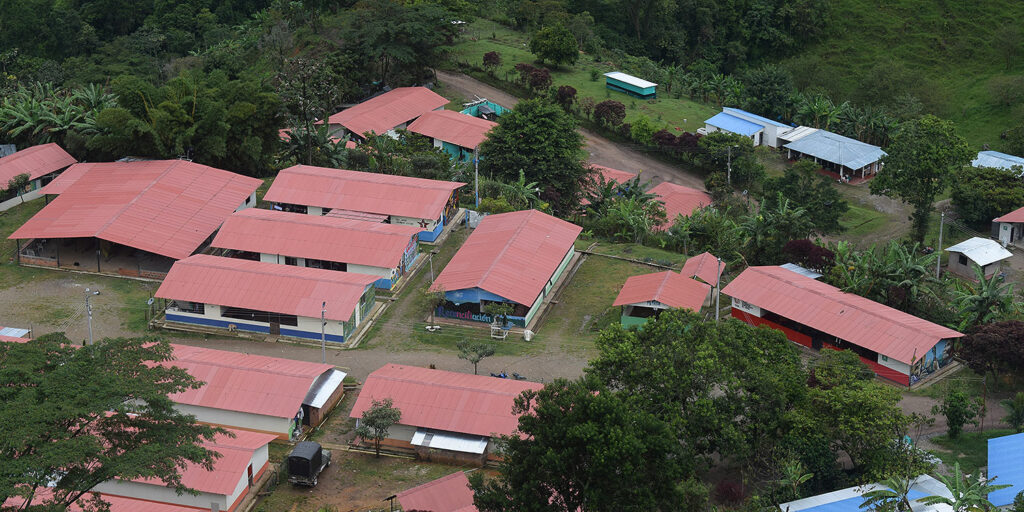
In the midst of the positions put forward by the ex-FARC guerrillas and the ARN, on behalf of the State, there are control entities and civil society organizations that monitor the implementation of the Peace Agreement, whose analyses ponder the progress and pending tasks.
In the Third Report to Congress on the status of the implementation of the Peace Agreement presented to the Congress of the Republic, submitted last August, the Attorney General's Office expressed its concern about the ARN's vision of the National Reincorporation System (SNR), an instrument created with Conpes 3931 of 2018 to follow up on the reincorporation process of former FARC combatants.
According to the report of this control entity, five years after the signing of the Peace Agreement there is no "plan to advance in the formalization of the SNR, and, on the contrary, it is not perceived as a necessary instance for the implementation of the policy [...] In this sense, it is unknown that the creation of the SNR is a commitment that was consigned in the Conpes 3931 of 2018".
In addition to this, the Attorney General's Office was concerned that "the actions of the ARN continue to expand without having a formal instrument that guarantees the accompaniment of the competent institutions to assist the communities, as this control body has reiterated in past reports to Congress and in other instances".
The Public Ministry highlighted some achievements of the implementation, such as the regulations governing access to housing, the approval of the long-term social and economic reincorporation route, the consolidation of the ETCRs, the land purchase processes and the development of their productive projects.
However, it reiterated the "call to guarantee an impact and improvement in the quality of life of people in the reincorporation process and their families, for which it emphasizes, the importance of having an instrument to measure the impact of public policy and thus identify aspects to be strengthened in the social offer of the State", in reference to the National Reincorporation System.
The subject was taken up again, in its last quarterly analysis, by the Kroc Institute of the University of Notre Dame, for the period July-September of this year. This institution also highlighted the achievements so far, but indicated that "the construction and implementation of the National Reincorporation System (SNR) for the articulation and follow-up of the programs, plans and projects of the reincorporation process" is yet to be completed.
The former guerrilla leader summarizes what is required to strengthen the reincorporation process for the coming years: "it is necessary to join actions, efforts of the whole Colombian society, change the correlation of forces, strengthen the emotion of peace to advance on a clearer path".



